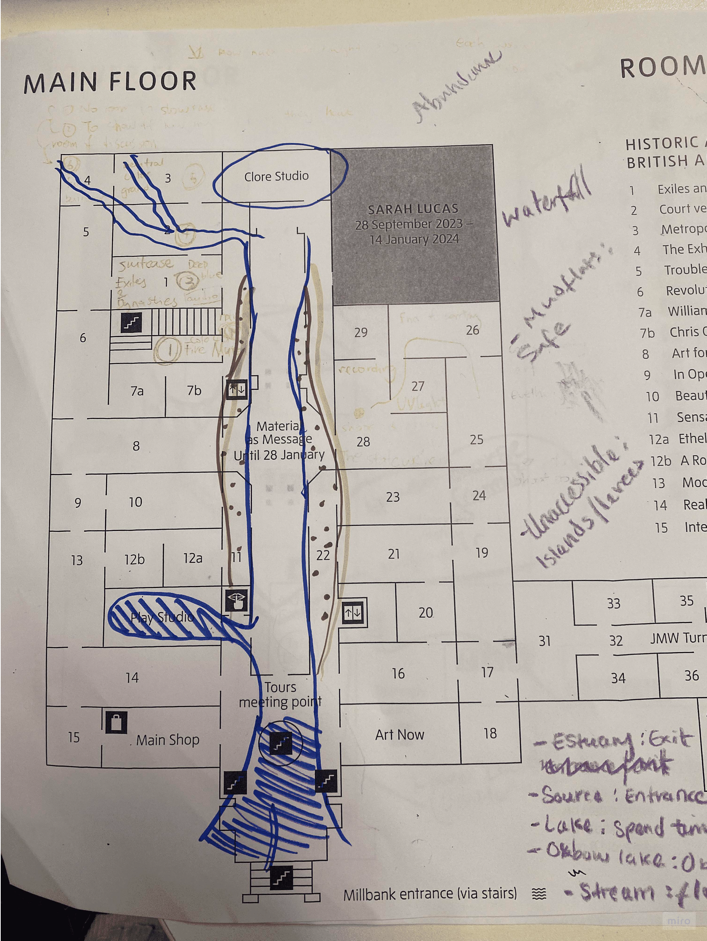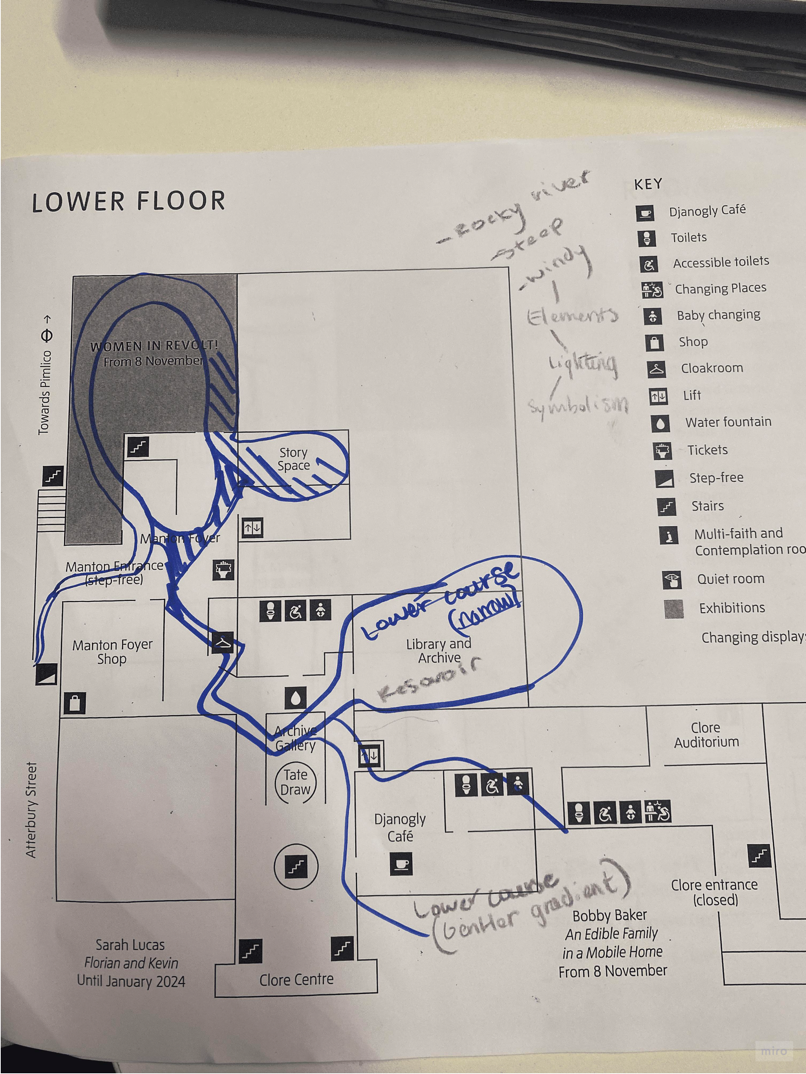Tate Journey
A site-specific holistic way to interact with the museum and reflect on your journey.
Based on the academic anthropology, 𝒯𝒽𝑒 𝒟𝑒𝑒𝓅 𝐸𝒸𝑜𝓁𝑜𝑔𝓎 𝑜𝒻 𝑀𝑜𝓋𝑒𝓂𝑒𝓃𝓉 𝒷𝓎 𝒜𝓁𝒶𝓃 𝒟𝓇𝑒𝓃𝑔𝓈𝑜𝓃 & 𝒴𝓊𝒾𝒸𝒽𝒾 𝐼𝓃𝑜𝓊𝑒, through this project I aimed to respond to Tate Britain as a space through intertwining biocentrism with technology and space. We worked over several months alongside Tate residencial artist and co-designer, Josh Woolford to construct and communicate new ways of engaging with Tate. Through this, we formed a collective called 𝐿𝒾𝑔𝒽𝓉 𝒮𝓅𝑒𝒸𝓉𝓇𝓊𝓂, a collective of responses to Tate as a space, website and historical institution to bring light to acknowledgment of present people and culture.
With my response, I looked into how wayfinding at Tate as a space. I expanded in ways that Tate would mimic nature, and I began by drawing over the top of the current Tate map to see what could be changed or added. Through this exercise, I mimicked the characteristics of a river, giving each space a different physicality, based on the way that I walked around and interacted with the museum. For example, I gave the main space the characteristic of oxbow lake, as when walking through it, I noticed I made a semi-circular trail around the main installation in the middle of the room.


Taking inspiration from projects such as 𝒯𝒽𝑒 𝒟𝑒𝑒𝓅 𝐿𝒾𝓈𝓉𝑒𝓃𝑒𝓇 presented by the Serpentine Galleries, I wanted to find an alternative way to interact and utilise the Tate space, which lead me onto creating a website called 𝒯𝒶𝓉𝑒 𝒥𝑜𝓊𝓇𝓃𝑒𝓎. This website allows users to become more present within the Tate space through universal technology that instead of disconnecting, allows users to be 𝑔𝓊𝒾𝒹𝑒𝒹 throughout the space. Through tapping their phone on an NFC in directed checkpoints around the museum, users can choose a trail from the given list, or create their own trail for self-guidance and reflection. Resting points are encouraged to be logged. The result of this would be visitors coming into Tate Britain build a better reflective connection with the space and artworks, encouraging visitors to be more in the presence of the space, which can be an important first step to discussing Tate as an institution and allowing visitors to truly understand its history and culture.